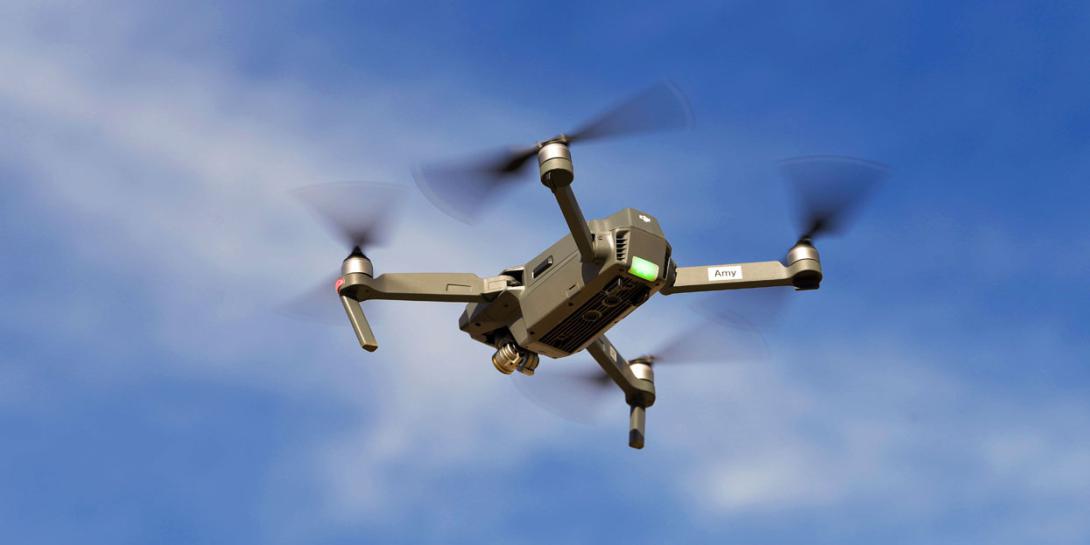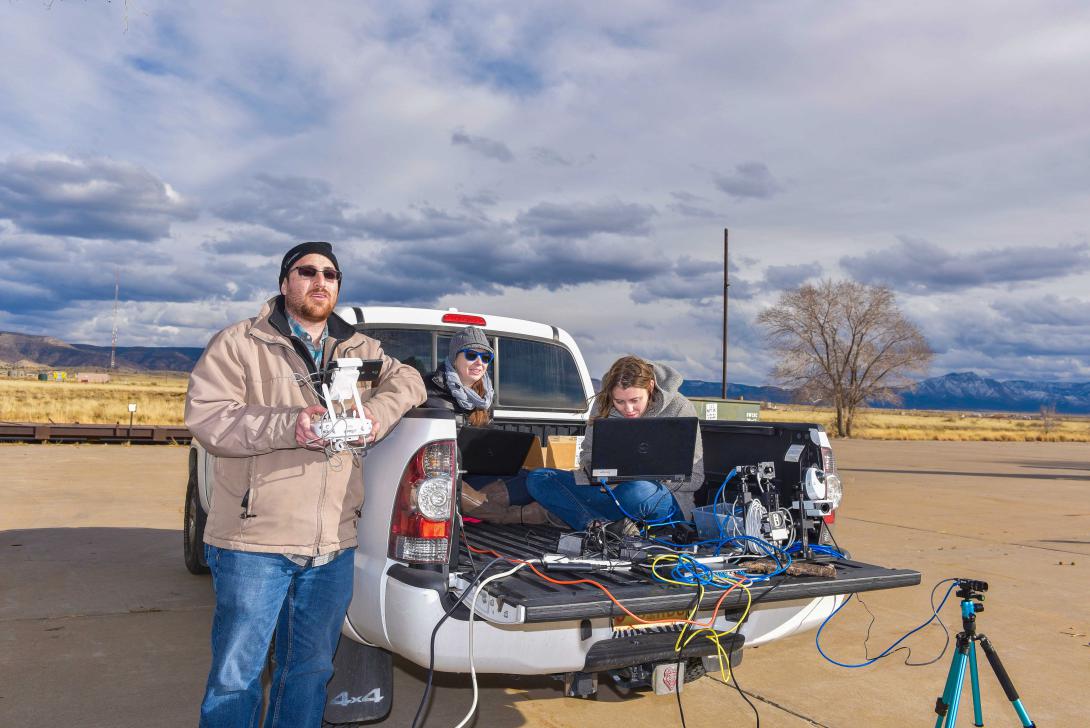Catching Menaces In Midair
 Sandia National Laboratories robotics experts have successfully flown a swarm of four unmanned aircraft systems in unison to intercept an unmanned intruder in a net in midair. Each drone carried one corner of a net and, acting as a team, they trapped the target like an insect and then safely lowered it to the ground.
Sandia National Laboratories robotics experts have successfully flown a swarm of four unmanned aircraft systems in unison to intercept an unmanned intruder in a net in midair. Each drone carried one corner of a net and, acting as a team, they trapped the target like an insect and then safely lowered it to the ground.
The indoor test was part of the two-year Aerial Suppression of Airborne Platforms project, a Laboratory Directed Research and Development program, which led to funding for three years of continued research and testing for the Mobile Adaptive/Reactive Counter Unmanned System (MARCUS) project. MARCUS aims at addressing the threats small, unmanned aircraft systems (UASs) pose to national security.
“This is the future of security and incident response,” Jon Salton, manager of the Sandia team working on MARCUS, says. “Think of this as drone-against-drone. What we need to accomplish is combining ground- and aerial-based capabilities to more robustly address the UAS threat into the future.”
David Novick, project lead, explains that a ground-based computer system controlled the swarming platforms demonstration. “The computer system knows where each aircraft is at any given time and sends commands that space and move the system as a whole appropriately,” Novick relates. As a result, each aircraft can optimize its position for intercepting the targeted aircraft systems, he adds.
MARCUS encompasses three phases: identify, track and capture. In the identification phase, sensors on unmanned aircraft systems combine with ground-based systems to scan the environment. Computer systems use this information to detect unmanned aircraft systems that pose a threat. Novick explains that additional UASs can then be deployed to track and assess a threat vehicle, gather information and predict future movements.
Salton says an airborne approach is required to address UAS threats because ground-based radar has difficulty identifying low-altitude threatening vehicles through obstacles such as buildings and trees. Sandia developed algorithms for airborne mobile defense systems during the 2017 original two-year aerial suppression project. Then, building on these advances, the MARCUS project airborne system with sensors was able to enhance the ability to mitigate threats dramatically.
Despite the successful test, Novick says researchers still face the challenge of designing a system that has never been created before. But if testing continues to be successful, the technology could benefit multiple organizations, including the military, the Department of Homeland Security, law enforcement entities and event organizers.
Sandia is leading the MARCUS project in collaboration with Rafael Fierro, a professor in the Department of Electrical and Computer Engineering at The University of New Mexico. The NATO Science for Peace and Security Programme is funding the project, which incorporates advanced algorithms funded by the U.S. Department of Homeland Security Science and Technology Directorate. The work is being performed in partnership with the science and technology procurement arm of the Swiss Federal Department of Defence, Civil Protection and Sport.






Comments